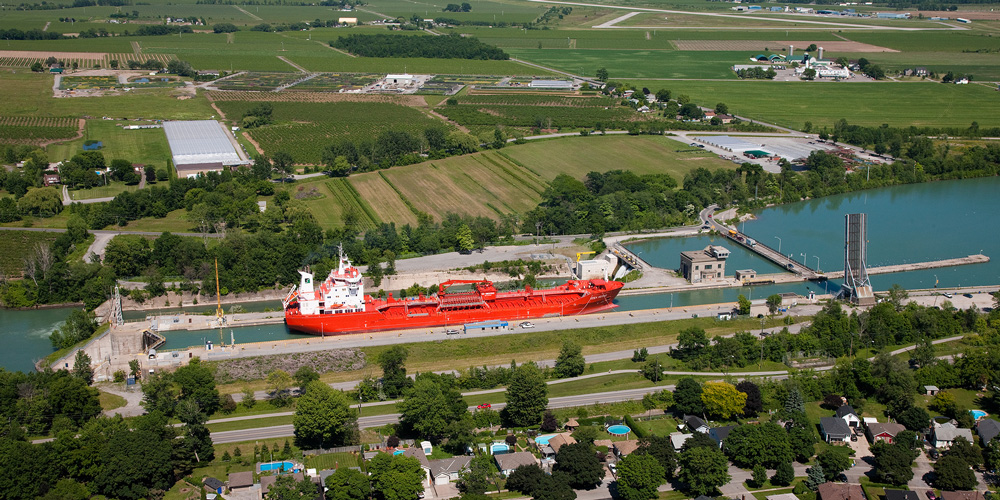Seaway Presses Ahead with Bid to Broaden its Client Base
June 27, 2007
Cornwall, Ontario, June 27, 2007 – The St. Lawrence Seaway Management Corporation (SLSMC) announced today that cargo volumes at the outset of its 2007 navigation season have been building at a slower-than-anticipated pace. The revised forecast for the year now stands at 44 million tonnes of cargo. Though lower than the 47.2 million tonnes realized last year, the new forecast still projects an increase over the 43.3 million tonnes recorded in 2005.
Factors underlying the lower cargo volumes include a reduction in the quantity of steel imports due to high domestic inventories, coupled with slowing industrial production. With charter rates for ocean vessels remaining near all-time highs, ship operators are less inclined to enter the Great Lakes Seaway System, as opportunities abound elsewhere to profitably engage their vessels. With the reduction in the number of ocean vessels transiting Seaway locks loaded with steel, fewer vessels are available within the system to load grain for the return voyage to overseas destinations.
Richard Corfe, President and CEO of the SLSMC, cited the unpredictable nature of global trade conditions in underlining the importance of continuing efforts to diversify the Seaway’s client base, and pressing ahead with technological initiatives that promise to further enhance the system’s competitive strengths. “We are very much aware of the volatile and unpredictable factors that affect our current users’ operations, and thus our cargo volumes. It is for this reason that our efforts to diversify our client base continue to move ahead, as do our efforts to introduce new technology such as hands free mooring and self spotting. These initiatives promise to further enhance the competitiveness of our system, as well as its reliability and safety for all concerned.”
Mr. Corfe’s U.S. counterpart, Collister Johnson Jr., Administrator of the Saint Lawrence Seaway Development Corporation, noted a positive outlook for project cargo this season. “We anticipate a continuation in the upward trend that we enjoyed last year within the project cargo market. In particular, the flow of wind turbine components into our system continues unabated.”
The Hwy H2O “Blue is Green” campaign is gaining momentum, as billboards are erected in various communities bordering the Great Lakes Seaway System. Recognition of the benefits of moving more cargo over the marine mode is building, including the potential to ease land based congestion, raise energy efficiency and reduce greenhouse gas emissions.






